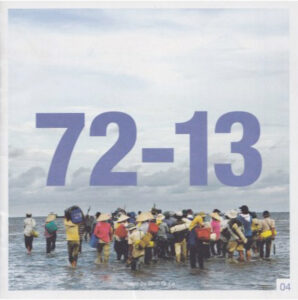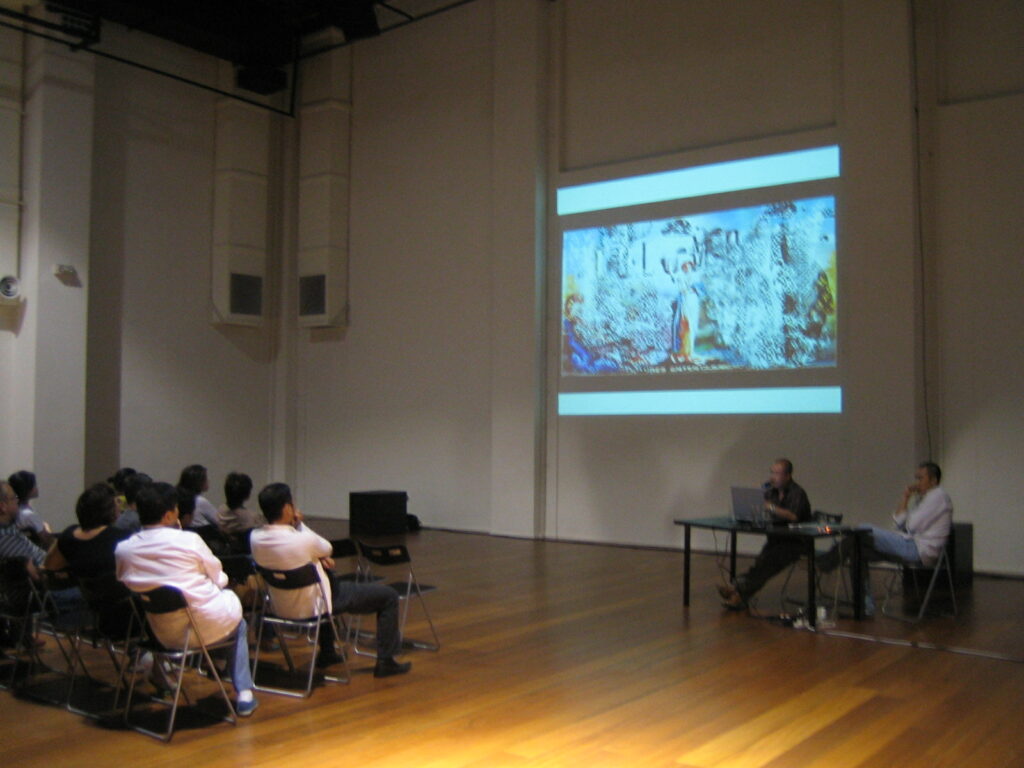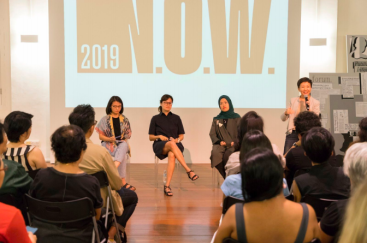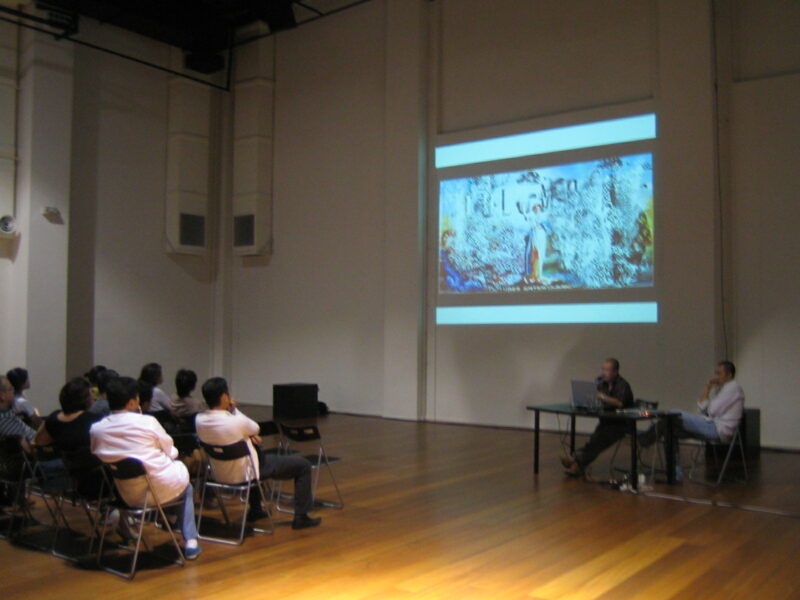
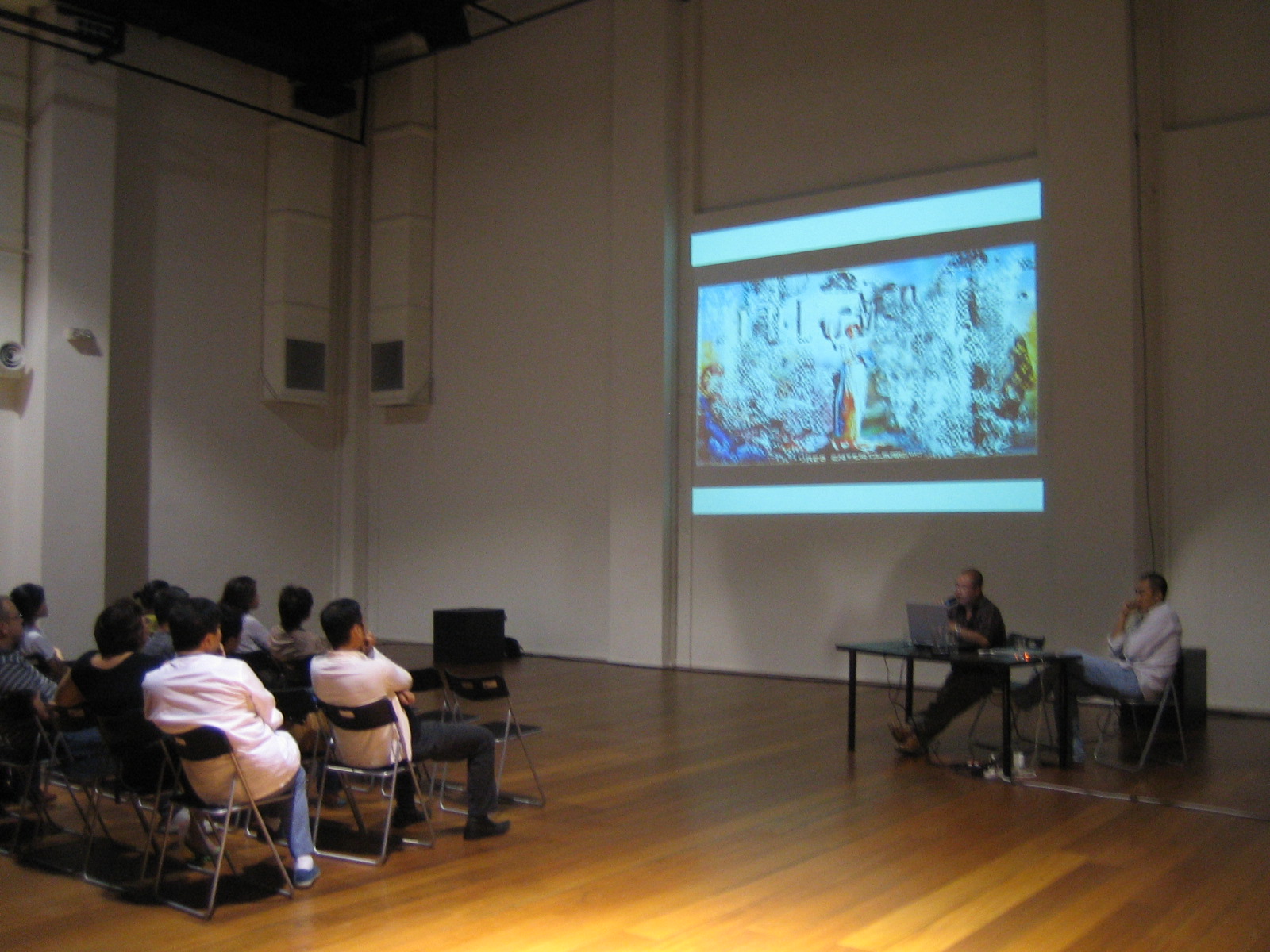






Key Words
Cosmopolitanism, Diaspora, Film, Music, Painting, Refugee,About
Providing an insight into Diaspora as well as the work of various artists in the production, 72-13 presents a series of conversations to introduce audiences to the work and the research for this new production.
Talk By Ong Keng Sen (4 August 2006)
Artistic Director Ong Keng Sen opens the series of talks and introduces the thinking and directions behind this new work, Diaspora. Delving into the materials gathered from research trips to cities including Mumbai, Los Angeles, Chiang Mai, New York City, Ho Chi Minh City, Bali, Jakarta, the Riau Islands, Ong presents an overview of this new work.
“The sea nomads don’t talk to the mind, they speak with the spirit of the person. When they tell a story, it is to the listener’s subconscious. They do not trust the memories of the brain. Learning by the mind is not their way. In the boat, half awake, half asleep, they talk to you, you are in a dream. They get inside you even if you don’t understand the story. You listen, you forget. Then suddenly one day, you will remember.” — As told by Zai Kuning to Ong
Talk By Dinh Q Le (11 August 2006)
A Vietnamese-American visual artist currently living and working from Ho Chi Minh City, Dinh Q. Le arrived in the West Coast USA as one of the boat people, a refugee. Educated in Los Angeles and New York City, he is a highly reputable American artist who decided to return to his roots and work in his homeland as an artist. His work has been shown all over the world including major biennales such as the Venice Biennale, the upcoming Asia Pacific Triennale and the Gwangju Biennale. He was recently given a solo mid-career retrospective at Asia Society New York.
“When my family escaped from Vietnam we left everything behind, including our family photographs. It was as if we had erased our past. I hoped to find some of my photographs when I came back to Vietnam. I went to a second hand store that sold photographs but I never found any of them. I began to collect other peoples photos because it was a way of getting closer to my family. The photographs came to represent the lives we had before and during the war, a way for me to reclaim what was lost. This was a time when the world only saw images of death in Vietnam but we did have a life there then. I actually have some very fond memories from the years during the war.” — Dinh Q. Le
Talk by Ariani Darmawan with Screening of Dragons Beget Dragons (18 August 2006)
It all began at the end of 2001 when Ariani Darmawan stumbled upon a CD, Music from The Outskirts of Jakarta. It was something she had never heard before, strange and altogether fascinating.
Her curiosity grew deeper as she discovered the history to the music. To this day, Gambang Kromong is known as the only adaptive-culture of the Chinese-Indonesians, or “Tionghoa Peranakan”, as they are popularly referred to, literally meaning Indonesian-bred Chinese. Aside from Darmawanis own personal interest as a Tionghoa Peranakan herself, she felt obliged to share whatever information she had with the public about the existence of this hybrid-culture, complete with its rich historical background. She poses: “How much does one know about one’s culture, and moreover, one’s self?”
After centuries of living in Indonesia, Chinese-Indonesians are still depicted as estranged from the rest of Indonesian society. Rigid racial stereotypes have been firmly attached to them, as a result of various political interests, not to mention the drive of the Chinese themselves to retain certain cultural purities and their heritage intact.
Gambang Kromong teaches us the survival of a culture; it opens itself up to other cultures, all the while retaining its unique identity.
Ariani Darmawan is a film-maker, writer, and a video artist residing and working in Bandung, Indonesia. Her films are often taking themes of power, identity, collaborating images and texts. She participated in many national and international festivals such as: Film Festival Indonesia, Rotterdam International Film Festival, Los Angeles Film Festival, and Rencontres Internationales Paris-Berlin. In 2004 she was invited by Theatreworks to participate in The Flying Circus Project and early 2006 in the Gang Festival, Sydney, 2006.
Anak Naga Beranak Naga (Dragons Beget Dragons) is her fifth film, and is her first long documentary work.
Talk by Navin Rawanchaikul with New Painting Exhibition (25 August 2006)
Born of Indian origins, Navin Rewanchalkul grew up in Thailand. Now living and practising his art in two cities, Fukuoka and Chiang Mai, Rawanchaikul is embarking on a search for iNavinst in different parts of the world. This is the genesis of his Bollywood music video for the final performance at the Esplanade. Come to the special unveiling of the new painting by a Mumbai movie poster painter about “Who is Navin?”
Navin has exhibited all over the world including Palais de Tokyo in Paris, Hayward Gallery in London, PS1 NYC, Sao Paolo Biennale, Sydney Biennale, and Yokohama Triennale.
“Late one night, drinking alone in his Chiang Mai studio Navin Rawanchaikul, a lonesome son of Diaspora, and the product of a globalised world finds himself searching the internet for people who share his name. What he discovers is a veritable flood of Navins from curry chefs to rock bands to recent software from Sony. In one obscure search result, he finds an alluring phone number. The call he then makes sets him off on a world-wide adventure that will combine the creative possibilities of Navins from ever corner of the planet and change the course of history! Or will it?” — Scenario of Navins of Bollywood
Tags
Printed Matter
Click on thumbnails to view high resolution files.
Related Programmes
Insomnia@ICA, The Singapore Season, London (2005)
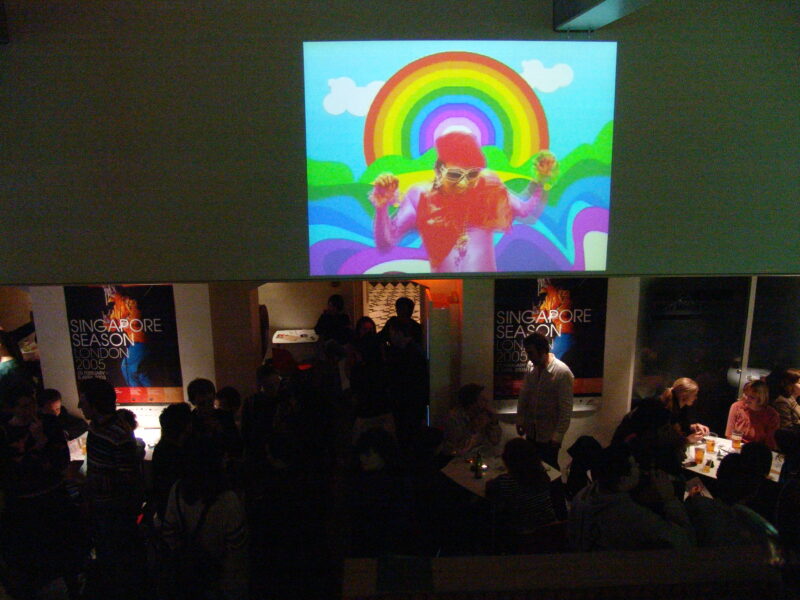
View details
Opening of 72-13
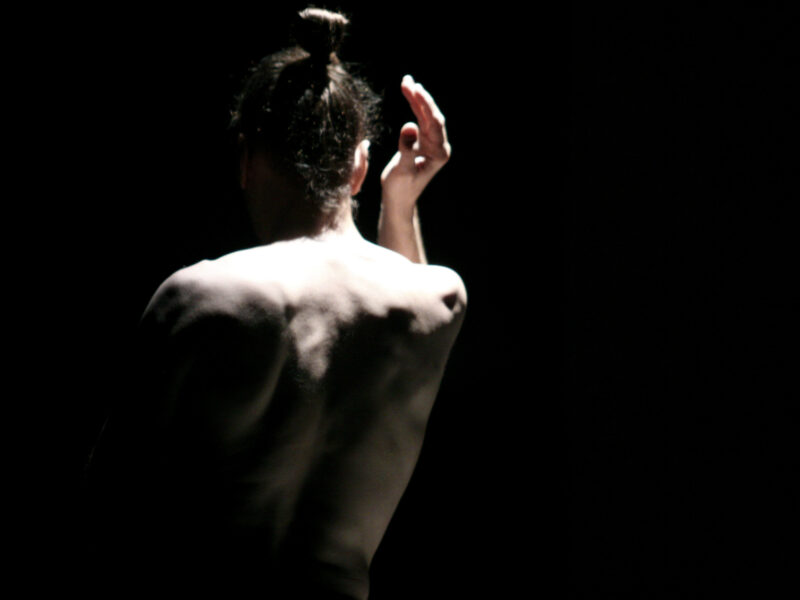
View details



